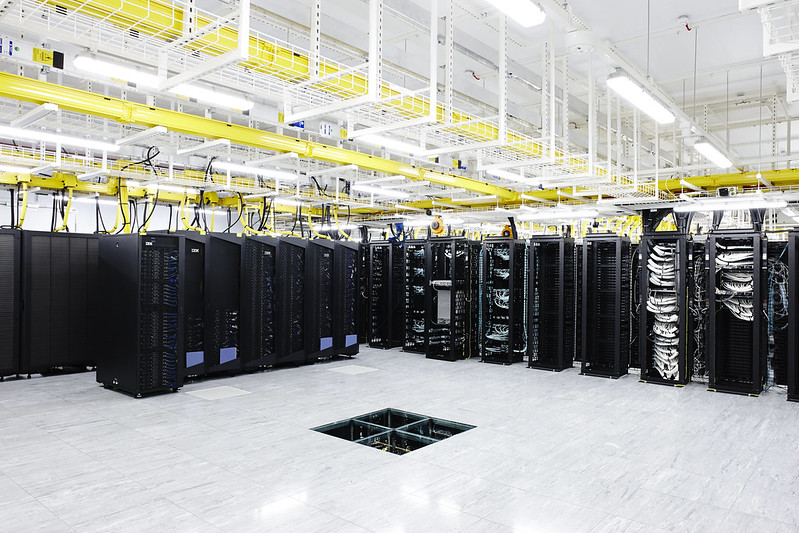According to this International Energy Agency (IEA) report, the global power consumption by data centres was nearly 415 TWh (terawatt-hours) in 2024…
To give it some perspective, it accounted for a whopping 1.5% of the entire world’s electricity consumption for the year. When generative AI (artificial intelligence) burst onto the scene, it was hard to imagine that it would be a power guzzler – but it’s undeniable.
With generative AI asking for more power as each day passes, data centres are looking for cleaner energy solutions. So, what’s coming to the rescue? An unlikely ally – photonics technology, which promises to become a game-changing solution by harnessing the power of light.
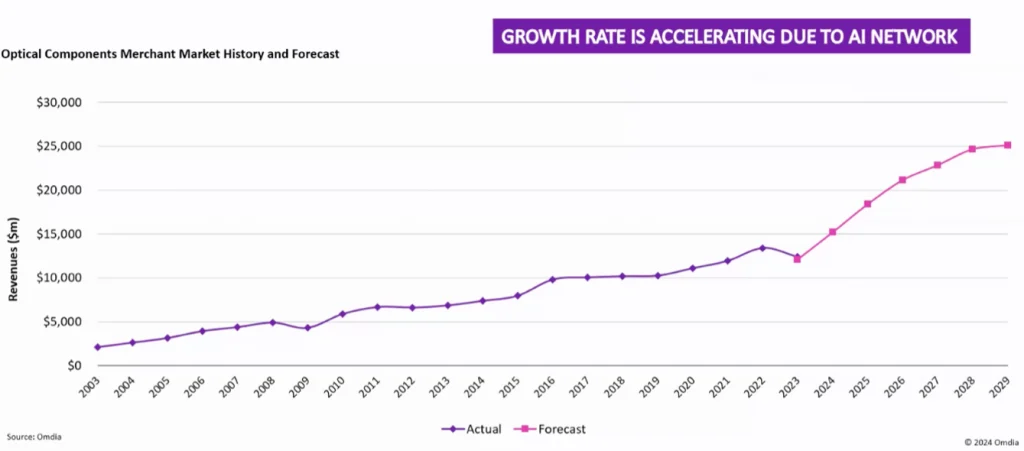
AI Data Explosion: The Data Centre Dilemma
Data centres are the keystone to our digital world. However, generative AI’s rapid advancement comes with significant demands for energy consumption and data storage, with those needs increasing significantly every year as AI and LLM (large language models) grow in capability and complexity.
According to JLL’s industry projections, global data centre usage capacity is expected to soar from 2023’s 10.1 ZB (zettabytes) to an earth-shattering 21.0 ZB by 2027. Their energy demands, as we’ve seen above, are equally staggering, raising critical questions about the sustainability and environmental impact of AI-driven data centres.
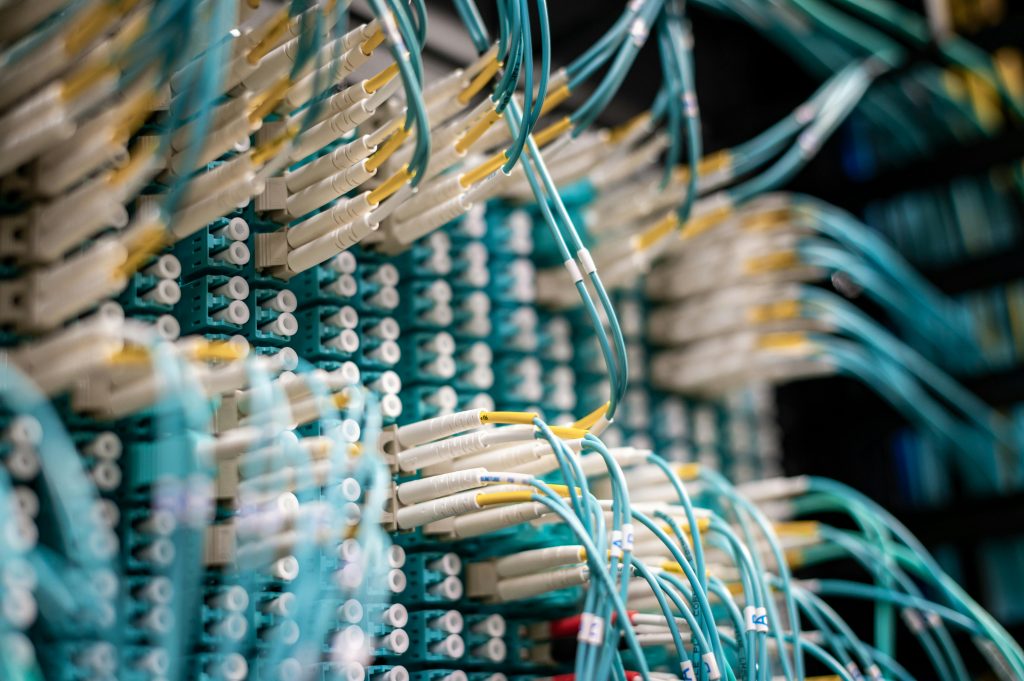
Welcome, Integrated Photonics
Another issue plaguing data centres is escalating data rates, which are severely limiting the performance of pluggable optical transceivers which allow data transmission between switches and NICs across tens of meters. With rising data rates, these solutions are increasingly facing performance and power limitations.
Photonics technology, which is the physical science of light waves, is a promising solution to the data centre dilemma.
Instead of electrons, it revolves around using light to transmit and process data. To put it simply, integrated photonics involves integrating multiple photonic elements into electronics to create compact, integrated optical circuits that indulge in photon manipulation to transmit and process data.
In data centres, where rapid data transfer is critical, integrated photonics is a compelling substitute to traditional methods, enabling high-speed optical connectivity for high-performance, next-generation data applications.
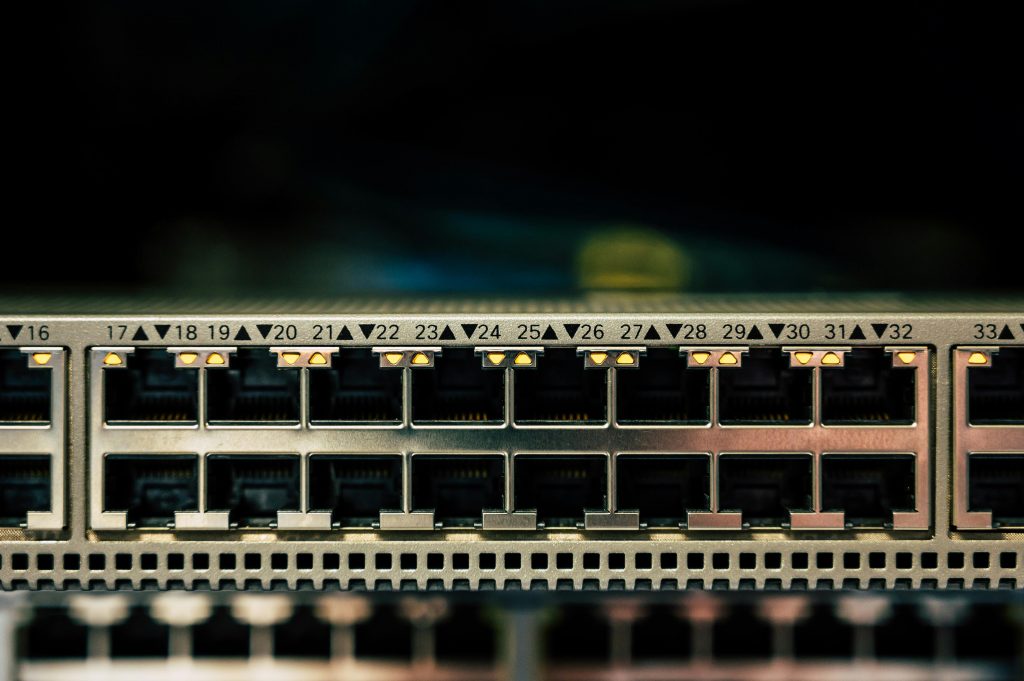
Photonics in Action: Speeding Down The Information Highway
Photonic integrated circuits are one of the most significant things to have happened to data centre technology, propelling it forward by leaps and bounds. These mini devices integrating numerous photonic functions onto a single chip allow for quick data transmission at light’s speed. They’re ideal for large-scale data centre applications since they’re particularly effective for high-frequency data transmission over larger distances.
One of the biggest and most immediate applications of photonics in data centres is through optical interconnects. Replacing traditional copper-based cables, these light-based connections are enabling quick exchange of data between networking equipment, storage devices, and servers. All this put together not only reduces energy loss due to heat generation but also increases reliability and enhances the overall performance of the data centre.
Organizations such as Intel have already begun deploying silicon photonic transceivers that have the capability of transmitting data at 100 Gb (gigabits) per second and poised for even higher speeds on the horizon.

Just like optical interconnects, optical switches in data centres are replacing traditional electronic switches, leveraging integrated photonics to offer faster data routing without the usual bottlenecks associated with electronic systems. This improvement not only results in improved network scalability but also results in reduced contention of resources within data centres.
Then, there are also photonic processors, which are emerging as the new ray of light in data centres – quite literally. They offer immense potential for significantly lower power consumption and higher processing speeds as compared to their electronic counterparts, which is exactly the problem that data centres are looking to solve. These processors are potentially revolutionising AI data analysis and model training by using light to perform computations.
Finally, the photonics epitaxial wafer technology lies at the heart of all these advancements. This innovative manufacturing process allows designing high-performance optical components that will eventually become essential for next-generation AI systems and data centres.
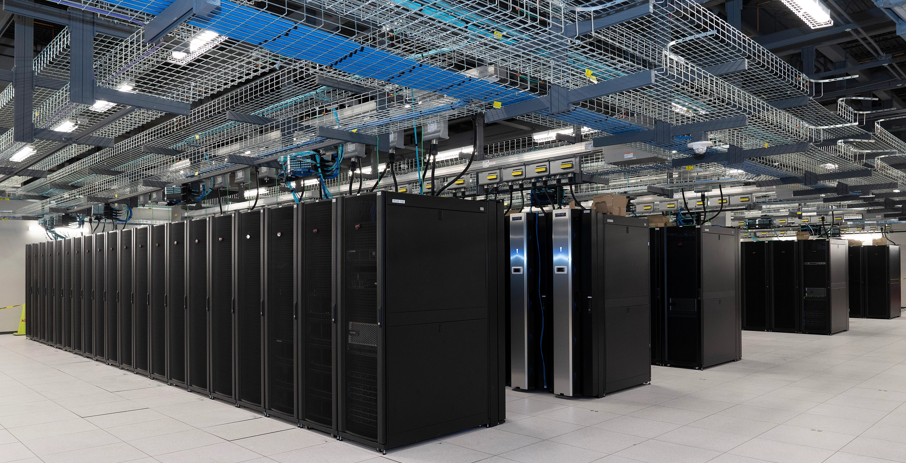
Powering Down
There’s no doubt that the AI revolution has been pushing data centre infrastructure to its limits and will continue to do so, given global needs. However, it’s also driving innovation at an outstanding pace. This is where integrated photonics, with its potential for scalable, energy-efficient, and high-speed solutions, is poised to play a critical role.
It allows data centres of the future to keep up with the insatiable appetite of AI algorithms for computing power and data, making them not only more efficient but also capable of handling higher bandwidth. The future of data centres and AI is bright, no doubt, but it requires collaboration across the photonics industry – right from energy providers and data centre operators to system integrators and chip designers.
With continued collaboration and innovation, the industry can harness the power of AI, building the foundation of a more efficient and sustainable digital infrastructure and AI-powered future for generations to come.
In case you missed:
- Data Centre in a Mine Located in The Alps. What’s Next for Underground Data Centres?
- The Price Of Money: Can Cryptocurrency Go Green?
- Multiplexing in Networking: An Overview
- The Rise of AI-Driven Governance in India
- Cryptocurrency Cloud Mining: How Does It Work?
- Bitcoin Halving: Everything You Want to Know
- The Future of Wearable Tech in Personalised Care
- Is Generative AI Spinning a New World Wide Web?
- All About AI Prompt Injection Attacks
- AI-Powered Phishing: The Future Of Digital Fraud




